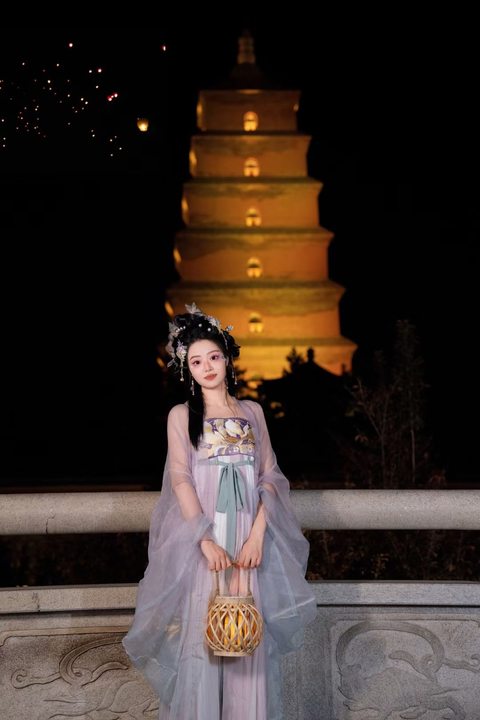


1. Ru Skirt (襦裙): This ensemble combines a Ru (a short upper garment) with a skirt, embodying elegance and simplicity.
2. Tang Dynasty Large Sleeve Shirt (唐代大袖衫): Characterized by its wide, flowing sleeves, this shirt reflects the grandeur and grace of Tang fashion.
3. Futou (幞头): A traditional Chinese headwear that was popular during the Tang Dynasty, known for its intricate folding and wrapping techniques.
4. Round-Necked Robe (圆领袍): Featuring a round neckline, this robe is a staple of Tang dynasty attire, offering a formal and dignified look.
5. Half Sleeve (半臂): A type of garment with short sleeves that was popular for its practicality and comfort, especially in the warmer months.
6. Modified Tang Attire (改良唐装): This category includes modern adaptations of Tang dynasty clothing, blending traditional elements with contemporary fashion sensibilities.
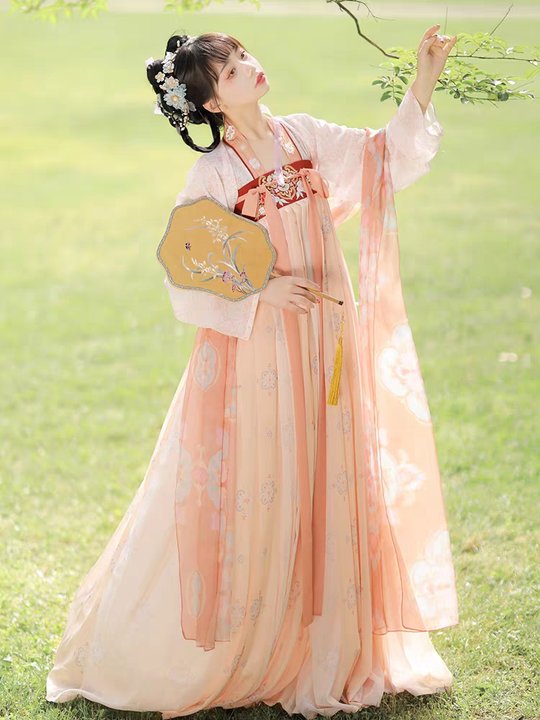
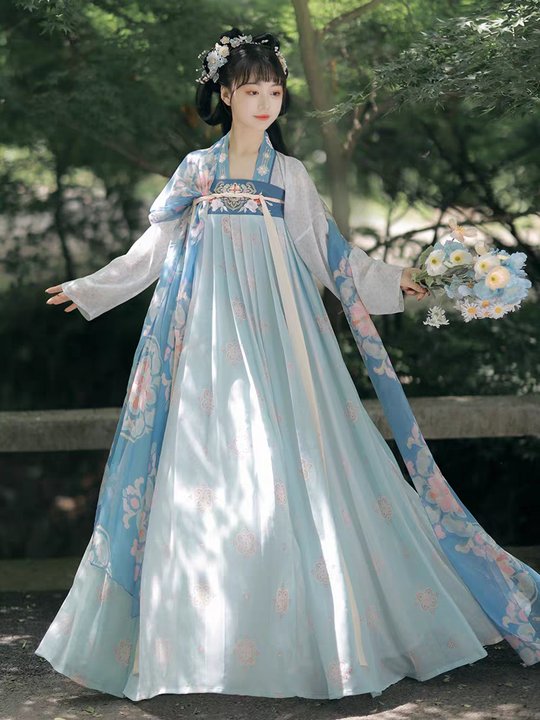
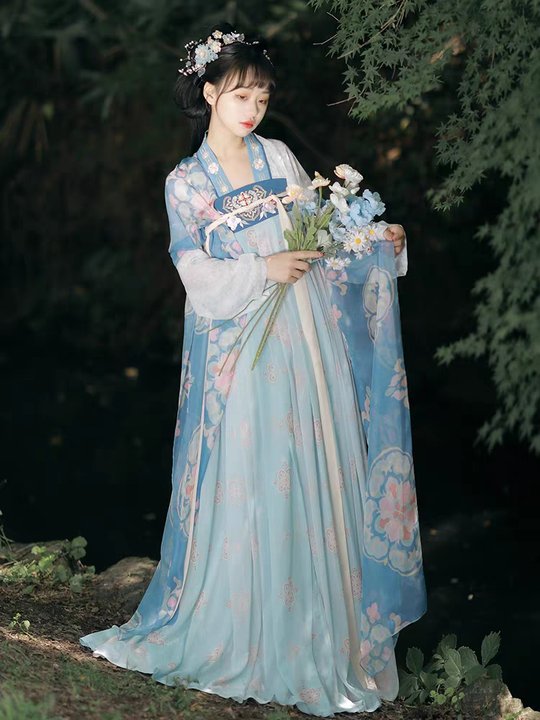
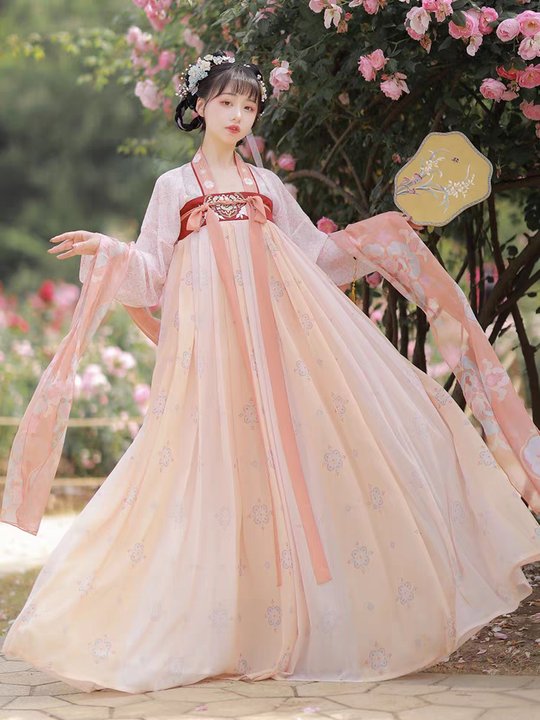
Modern Tang Dynasty Hanfu includes Hanfu from the Tang Dynasty and modern recreations developed and restored based on the designs of Tang Dynasty Hanfu.
Ru (襦): A type of narrow, short jacket or padded garment.
Ao (袄): Longer than a Ru but shorter than a robe, with a looser fit, also available as a padded garment. Ru and Ao come in narrow-sleeved and long-sleeved varieties.
Shan (衫): A sleeveless undergarment designed to absorb sweat, available in straight-collared and right-over-left styles.
In spring and autumn, Shan can also be worn on the outside, but unlike the short-sleeved version worn outside, which evolved into a vest or half-sleeve garment, traditional skirts were always long, rectangular straight skirts, somewhat similar to the skirts of Japanese kimonos.
Square Skirt (方片裙): This style looks rather stiff and rigid, hence it does not accentuate a woman’s beauty. Therefore, during the Tang Dynasty, high-waisted, chest-binding skirts with wide, floor-length hems became popular. These styles not only highlighted the curves of the female body but also exuded a rich and elegant grace.
The construction of these skirts had to adapt organically to the human body’s structure, resulting in a flared skirt with a rounded hem and multiple pleats, or a bell-shaped skirt.
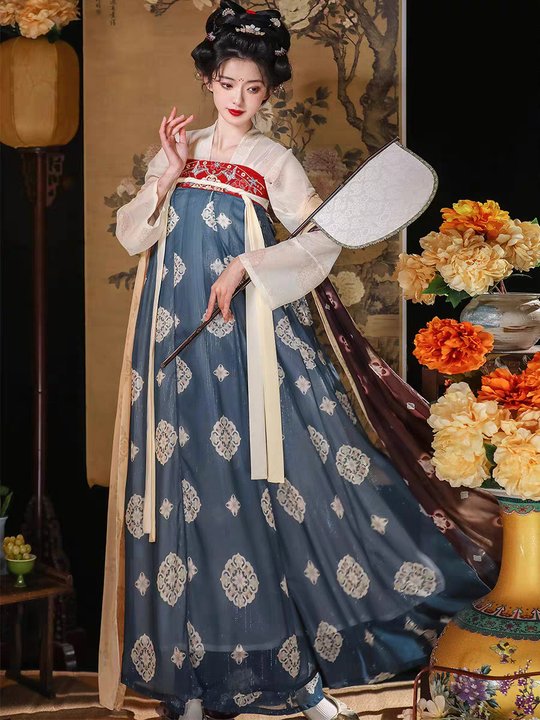

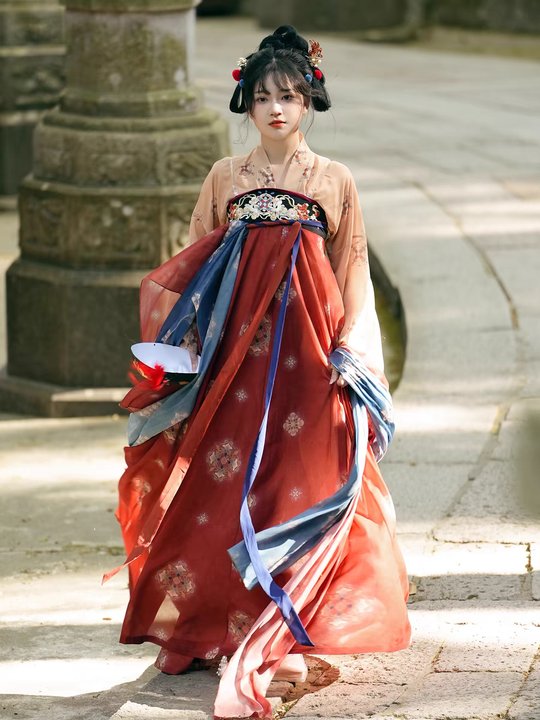
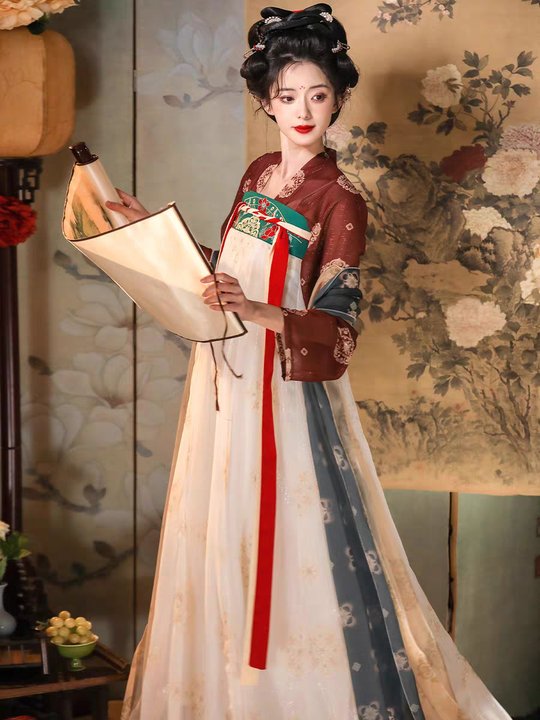
In the Tang Dynasty, only individuals of high status, such as princesses, were allowed to wear open-chested garments that partially bared the chest. Courtesans, too, could adopt this style to please the ruling class, but common women were not permitted to expose their chests. The semi-exposed chest dresses of the time were somewhat akin to modern Western evening gowns, with the notable restriction that shoulders and backs could not be revealed.
Women’s Tang attire featured a variety of collar designs, including round, square, slanted, straight, and heart-shaped collars.
The “short Ru and long skirt” style is characterized by a high waistline, usually above the natural waist, with some even tied under the armpits, creating a lively and slender silhouette.
During the Tang Dynasty, skirts were vibrant and colorful, with red, purple, yellow, and green competing in brilliance, particularly favoring red skirts. The popularity of red skirts on the streets was not a modern phenomenon; as early as in the prosperous Tang period, skirts dyed in pomegranate were widespread.
Possibly influenced by the concepts of Yin-Yang and the Five Elements, Empress Yang Guifei favored yellow skirts the most, which were seen as a symbol of status.
Explore the Real China.
Top Destination
Information
One thought on “Tang Dynasty Hanfu | The Everlasting Classic of Hanfu – Hanfu Customization”